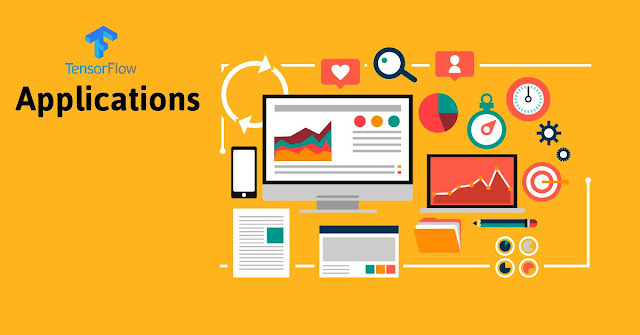1. Objective – Applications of Tensorflow
Today in this TensorFlow Tutorial,
we’ll be looking at the Tensorflow Applications. Moreover, in this
applications of TensorFlow, we will see companies using TensorFlow,
TensorFlow applications example and product built using TensorFlow.So, let’s start TensorFlow Applications.
2. Tensorflow Applications
TensorFlow, as told before, is a great tool which, if used
properly has innumerable benefits. The major uses of the library include
classification, perception, understanding, discovering, prediction and
creation. Some of the current uses of the TensorFlow system, Tensorflow
application and some other awesome projects done by the open source
community are listed below:- Deep Speech Developed by Mozilla is a TensorFlow implementation motivated by Baidu’s Deep Speech architecture. You can download the code and modify it under the license at: https://github.com/mozilla/DeepSpeech
- RankBrain- Developed by Google, it is a large-scale deployment of deep neural nets for search ranking on www.google.com. It is a part of the search algorithm that’s used to sort through the billions of pages it knows about and find the ones deemed most relevant. It is also the most talked about Tensorflow Applications.
- Inception Image Classifier, developed by Google, is a baseline model and follow-on research into highly accurate computer vision models, starting with the model that won the 2014 Imagenet image classification challenge and started the era of convolution networks.
- Massive multitask for Drug Discovery, Stanford University, is a deep neural network model for identifying promising drug candidates.
- On Device Computer Vision for OCR, is an On-device computer vision model to do optical character recognition to enable real-time translation.
- Using TensorFlow, we can make algorithms to paint an image or visualize objects in a photograph, we can also train a pc to recognize objects in an image and use that data to drive new and interesting behaviors, from understanding the similarities and differences in large data sets to using them to self-organize, to understanding how to infinitely generate entirely new content or match the aesthetics of other images. We can even teach the computer to read and synthesize new phrases which are a part of Natural Language Processing.
- Tensorflow can also be used with containerization tools such as docker, for instance, it could be used to deploy a sentiment analysis model which uses character level ConvNet networks for text classification.
Let’s discuss TensorFlow API
Apart from the general supervised and unsupervised algorithms, machine learning
has a great use in recommendation engines and almost every big company
is using it in some form or the other. TensorRec is another cool
recommendation engine framework in TensorFlow which has an easy API for
training and prediction and which resembles common machine learning tools in Python.
Other major Tensorflow Applications include :
Some other good products built using TensorFlow include:
- Speech Recognition Systems
- Image/Video Recognition and tagging
- Self Driving Cars
- Text Summarization
- Sentiment Analysis
3. Products Built Using Tensorflow
There are also a number of mobile applications that are available which exhibit the uses of the machine learning library. Apart from that, there’s a subreddit, r/tensorflow where people post the latest advances and their cool projects with the library.Some other good products built using TensorFlow include:
- Google Creative Labs Teachable Machine which uses tensorflow.js which lets you teach using your computer camera, live in the browser.
- Another cool project is Nsynth Super developed again by Google Creative Labs, which lets you make music using completely new sounds generated by the Nsynth algorithm.
- Another interesting project built using Tensorflow is Giorgio Camthat lets you make music by clicking pictures.


Comments
Post a Comment